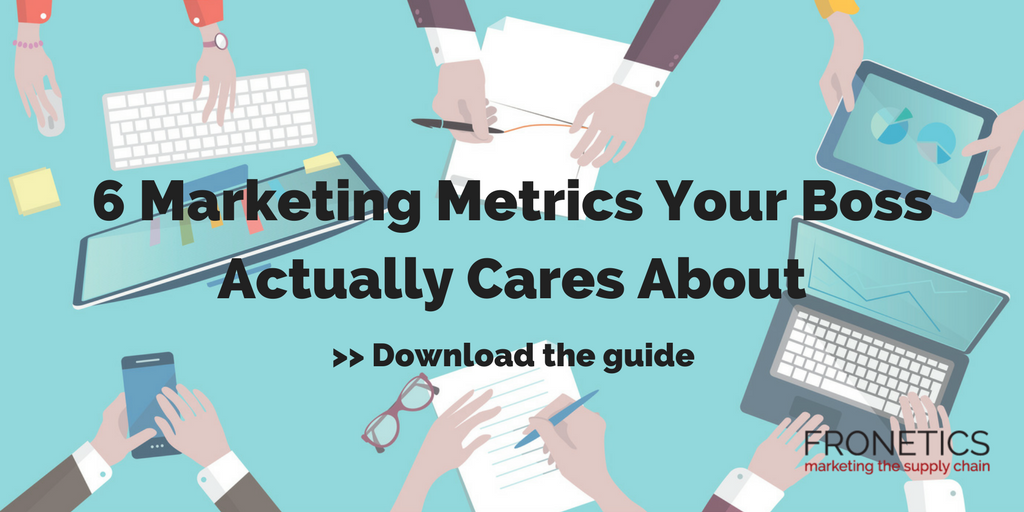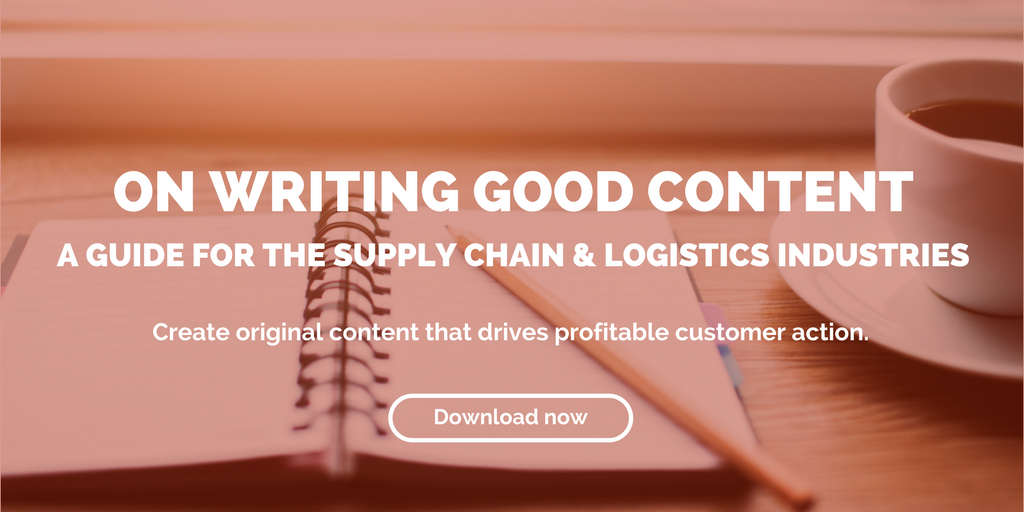
by Fronetics | May 14, 2018 | Blog, Content Marketing, Logistics, Marketing, Strategy, Supply Chain
Here are 4 ideas for measuring podcast success, including downloads, audience, lead tracking, and intangible benefits.
Podcasts are an increasingly popular content medium, but measuring their performance is difficult. Here are some tips for measuring podcast success in spite of the challenges. Spoiler alert: it’s an art, not a science.
Why podcasts?
Today’s busy professionals are increasingly driven to make their “down time” more productive and engaged. The popularity of podcasts rises every year, with more than 50% of American homes now classified as “podcast fans” by Nielsen.
[bctt tweet=”Podcasts are essentially blogs in audio format, and — like blogs — they are relatively cheap to produce, making them an excellent high-value offer.” username=”Fronetics”]
Podcasts are easily downloadable on a phone or mobile device. They allow the user to listen to a topic of interest while commuting, exercising, or cleaning the house. Podcasts are essentially blogs in audio format, and — like blogs — they are relatively cheap to produce, making them an excellent high-value offer with which to generate or nurture leads.
If you’re already creating podcasts as part of your content program, good for you! But, you’re probably running into a familiar challenge: It’s really hard to measure podcast performance.
4 tips for measuring podcast success
ROI calculations for podcasts are notoriously elusive because users download them on their devices. Producers won’t know whether a user ever listened to any or all of a particular podcast.
But measuring podcast success is possible, at least for those that don’t mind a little more nuance than numbers. Here are 4 tips to get you started.
1) Track unique downloads
With podcasting, the best measurement is something called a “unique download,” which tries to capture how podcasts are generally obtained. It measures a progressively downloaded file by a single user at a single IP address over a 24-hour period. Third-party tracking services like PodTrac or tracking/hosting services like Libsyn or Podbean can give you this information.
Is this perfect? Nope! Users can download and never listen or download and only partially listen. Multiple users can listen to one download, and one user can download twice (or more) onto multiple devices. There is nothing exact about tracking the number of unique downloads. But based on the way podcasts are consumed, it’s not a bad metric, and frankly, it’s all we’ve got.
2) Estimate your base audience
Determining the approximate size of your subscriber list — or at least your committed and consistent listening audience — is also helpful. This isn’t exactly the same as unique downloads. Subscribers are people that have gone out of their way to make sure to be alerted when you publish a new podcast.
To do this, examine two trends: the consistency in unique downloads across multiple episodes and, more importantly, the number of downloads in the first 48 hours after a new release. Those first few days are when your consistent listeners will grab the industry-fresh (you hope!) info, and it will give you sense of how big that segment is.
These subscribers are your bread and butter. And you can use this number, albeit approximate, as you would other marketing metrics that measure engagement.
3) Get creative (without getting annoying)
If getting a better sense of lead generation from your podcasts is imperative, try thinking creatively about how to access that information from your audience. But beware! The more you require of your listeners, the more annoying you potentially become. That said, here are some ideas.
- Create a page/section on your website where visitors can access the podcast. If you’re using a marketing software like HubSpot, you’ll be able to tell if leads access this via your site.
- Add an optional question on the lead-generation forms on your website, just a simple checkbox like, “Have you heard our podcasts?”
- Check the previous page path from your homepage on Google Analytics or your referrals sites report from software platforms like HubSpot for traffic coming from podcast websites.
- Create a special landing page and mention it as a call-to-action in your podcast several times. This way, you know any traffic visiting this page must have come through the podcast.
All these can offer a rough (but low) estimate of leads that have consumed podcast content.
4) Remember the value of intangibles
Here’s the part where we remind you how important it is to remember why you are podcasting. Lead generation? Of course. But why else? We’d venture to say building relationships, like all of your content marketing. Podcasts are wonderful for this!
Invite your current customers or best business relationships to join you for a podcast. There’s a lot of power in a really good interview on a podcast: You get some fresh and new content; you deepen a potentially very useful business relationship; and you gain their network of listeners, too.
Learn from the inconsistent
Patterns and consistency can give a broad sense of the success of your podcasting. But don’t forget to abandon them sometimes, particularly if there is one podcast that’s an outlier.
If one was wildly successful, that’s fantastic. Chances are you hit on an extremely timely topic, or perhaps did something better in your efforts to share outside of your base subscriber list. Great news for your lead-generation efforts!
That said, if you have one or two that garnered lower interest, don’t assume the opposite is true. And don’t let them skew your broader analysis. Sometimes it only has to do with how niche your topic was, and niche topics can still be highly successful lead-generation tools, particularly if yours is a niche business with niche clients. In fact, these niche podcasts may end up being some of your most successful.
Related posts:


by Fronetics | May 10, 2018 | Blog, Content Marketing, Logistics, Marketing, Supply Chain
An important part of your content strategy should be optimizing historic blog content to ensure it’s attracting as much traffic as possible.
We all know that creating original content on a regular basis is important to improving SEO and attracting organic traffic to your website. But, here’s a surprise: Most of your traffic will come from older blog posts.
An important part of your content strategy should be optimizing historic blog content to ensure it’s attracting as much traffic as possible.
If you have a lot of content, that may scare you. (Sounds like a lot of work!) But, as with everything, being strategic about optimizing historic blog content will pay off many times over. Here’s how I suggest going about that.
Pick your posts
At Fronetics, about 80% of our traffic comes from posts that are 6 months old or older. HubSpot also discovered a similar trend: 76% of its monthly views came from old posts, as well as 92% of the company’s monthly leads!
[bctt tweet=”76% of HubSpot’s monthly views come from old posts and 92% of their monthly leads.” username=”Fronetics”]
But not all posts were created equal. In fact, HubSpot found they got about half of their monthly leads from only 30 posts, and they blog at a blistering pace of about 200 new posts every month. Going back and optimizing hundreds of your old posts is a waste of time.
Hunt through your analytics and look for historical blog posts with:
- High traffic and high conversion rates: Readers view these posts often and convert frequently after reading them. Found any of these? Congrats. Most companies won’t have more than 1 or 2.
- High traffic but low conversation rates: These are the posts are viewed often but don’t generate leads.
- Low traffic but high conversion rates: These posts only garner a small number of hits but do well generating leads due to a higher-than-normal number of call-to-action click-throughs.
All set? Have a list of good blogs to work with? Here comes the fun part!
5 tips for optimizing historic blog content
Here are 5 tips to squeeze the absolute most out of your older blog posts (in terms of leads and conversions).
1. Update the content.
Rework it for today. Take out anything outdated and use a little finesse to make it more relevant. Don’t overhaul it; that’s unnecessary for a well-performing post.
2. Spice up the call-to-actions.
You’ll want to pay special attention to this for the posts that have high traffic but low conversion rates. CTAs have evolved. Old ones just aren’t going to appeal.
Revamp the CTA placement and appearance, and think (hard) again about your CTA content. Consider the language of the CTA and whether it fits the reader’s goal. What keyword(s) are they using to find the page? And does the CTA reflect this?
There’s so much information out there on making strong CTAs, but the bottom line is the CTA must match the intent of the audience.
Keep it bold. Keep it clear. And make ‘em an offer they can’t refuse.
3. Relook at your keywords.
For the posts that do well converting leads but don’t get a lot of traffic, you’ll need to take a fresh look at keywords.
Trying to rank for certain keywords in each blog post you publish is a practice on the way out. But it still has merit here, as long as you understand it within the larger picture of restructuring your website content into topic clusters and pillar content.
People are changing how they search, and search-engine-optimizing these old posts to get more visibility is the goal.
And here’s the beauty of optimizing historical blog content: You already have the data to know which keywords your audience are using to find the posts. Then prominently feature the keyword(s) in several places.
4. Update your posts’ meta descriptions.
If you’ve done the hard work to update the CTA and the keywords, updating the meta description is a natural next step. Keep it as close to (but not over) 155-165 characters. Include your keyword(s). Explain the value of the post to the reader. And keep in mind your ultimate CTA goal. Everything should align to make the meta description a true synthesis of the post; if it doesn’t, go back and tweak a little more.
5. Republish and keep the URL.
Things that are “fresh” receive preferential treatment from Google. (We know it’s hard to believe when 2012 articles are at the top of your search results, but it’s true.)
But do not lose that original URL when you publish again. It pulls way more SEO “rank” than a new one. Keep the URL even if you updated the title of the post and the URL doesn’t match perfectly anymore. It’s OK.
(It’s not a bad idea to put in an editor’s note at the end of the article if the blog already has garnered comments, so your future audience won’t be confused by a publish date that is later than the date on the comments.)
And that’s it. 30 days after optimizing your historic blog content, go back and see how successful your efforts were. Track the metrics: post views, CTA click-throughs, lead generation, and keyword ranking. We’re betting they’ve gone up.
Measuring the success of your SEO strategy shouldn’t be done by measuring the success of one post at a time. But making the most of your best old posts is an important part of any good content marketing strategy.
Final tip
The final tip isn’t really about optimizing historic blog content, so let’s call it a ½ tip. Remember how Tip 1 recommended reworking the old posts but warned against overhauling them with large rewrites?
Well… Here’s the thing. If you have 12 historic blog posts you just optimized, you should write 12 new blog posts on that same content, too.
Recycle that good historic content into additional fresh content. After all, it’s what your audience is searching for!
Related posts:


by Fronetics | Mar 15, 2018 | Blog, Content Marketing, Logistics, Marketing, Strategy, Supply Chain
Here are four simple steps to help you measure your company’s content marketing ROI and the success of your strategy.
Lean-startup pioneer Eric Ries said, “The only metrics that entrepreneurs should invest energy in collecting are those that help them make decisions.” In other words, measure the things that will tell you if an effort was profitable so you know where to put your time and money.
But most companies aren’t using the right metrics to track their content marketing ROI. For example, 83% of B2B enterprise companies (over 1,000 employees) use web traffic as their main metric for measuring content marketing ROI. A spike in homepage hits could be the result of your hard work, but it could also be ghost spam, or even both! So clearly, web traffic isn’t the most reliable metric.
Content marketing ROI is harder to quantify than checking a few quick numbers. But don’t give up hope. In the article How to Measure Content Marketing ROI: A Simple 4 Step Process, marketing consultant Bill Widmer breaks down a simple, four-step process that will quickly and effectively measure your content marketing ROI.
What is content marketing ROI?
Content marketing ROI is how much revenue you gain from content marketing in comparison with what you spend on creating and distributing content. It’s an actual percentage that shows how much revenue you gained vs. how much money you spent. And for a lot of businesses (and bosses), this percentage is very important. They want you to be able to prove that the marketing dollars that are going into your content marketing strategy are actually pulling in new business.
Every company has specific key performance indicators (KPIs) that help shape their marketing strategies. Here at Fronetics, we believe that your content marketing strategy should take these KPIs into consideration when thinking about your ROI:
- Website traffic
- Leads generated
- Conversion rate
- Direct sales
Obviously content marketing has more benefits than these four KPIs demonstrate — including better customer retention, brand awareness, and improved SEO — but to begin to measure your ROI, let’s focus on these four main points.
Measure content marketing ROI in 4 simple steps
1. Download your reverse goal path data.
Andy Crestodina, co-founder and CMO of Orbit Media, suggests:
- Go to your analytics dashboard. Set the date range for at least a year.
- Go to Conversions > Goals > Reverse Goal Path.
- Add a filter like “/blog” so only blog posts show up.
- Sort by Goal Completions.
After this step, you’ll be able see which of your posts have driven the most conversions. But you can’t stop there. These are simply conversion numbers. We want those numbers to become conversion rates, so let’s keep going.
2. Download your pageview data.
In order to calculate a conversion rate, you need to know pageviews. Here’s how to get that information:
- Go to Content > Site Content > All Pages.
- Filter with “/blog” to get only blog posts.
Download this data into the spreadsheet from step one.
3. Get your conversion rate.
Now here’s a little math for you. Divide the data in the “conversions” column by the number in the “unique pageviews” column. This will give you your conversion rate per blog post.
This will show you what your best-performing pieces of content are, and what posts need to be updated to gain more views and shares.
This information will give you valuable insight into the topics that your target audience are reading about and how you can better plan for high-ranking content in the future.
If you have posts or pages that are older — like over a year — and they haven’t gotten any views or conversions, it’s time to think about reworking them to have more appeal to your target audience.
For your actual percentage, you’ll need to calculate how many of these leads have converted to sales.
4. Calculate content marketing ROI based on lead conversions.
Here’s where things get a little more complicated, but still very manageable. You need to start putting tags on your leads according to the content they came from.
You can use programs like WordPress or Blogger to help you automatically tag any leads that came from a specific form. Assuming the form correlates to a single blog post, you will know that any leads with that tag came from that post.
You can also connect your leads with a CRM, such as HubSpot or SalesForce, and track which leads came from specific emails. These programs easily integrate with your analytics and email marketing platforms for up-to-date numbers and data.
Related posts:


by Fronetics | Mar 8, 2018 | Blog, Content Marketing, Logistics, Marketing, Strategy, Supply Chain
Use these 4 steps to determine the topic clusters that will be best for driving organic traffic to your business’ website.
You’ve determined your pillar content and written your pillar pages. Now what? It’s time to develop topics clusters.
Topic clusters show search engines that your website contains breadth and depth on a particular subject, which will help them decide to show your page over others in a user’s search for that subject.
Determining what topic clusters to use can be overwhelming — as can figuring out how to optimize blog posts that contain cluster content. Let’s take a step back and think a little about what a topic cluster is.
HubSpot Academy has a great succinct summary: “Topic clusters are comprised of a pillar page and subtopic content that you’ve compiled for each of your core topics.”
So how do you go about developing topic clusters? We’ve put together a four-step guide to get you started.
4 steps to developing topic clusters
1) Choose your topic.
This is all about determining where you can or strive to be a thought leader. Pick topics that are fundamental to your business, places where you can be a resource for potential buyers and industry peers. Define these topics with a name that summarizes the content it will address.
Chances are, you’ll have some supporting content already. Conducting a content audit will help you determine how much you have in place already.
2) Compile subtopics.
HubSpot recommends having “6-8 subtopics that address specific questions your customers may be exploring related to the core topic of your pillar page.” Other sources recommend between 10-20 subtopics. It depends on how broad your main topic is. (But if you can come up with more than 20 subtopics, your topic is definitely too broad!)
Conduct a brainstorming session with your team to think about relevant content that your target buyers would seek out when researching products and solutions.
Simple Marketing Now blogger Christine B. Whittemore suggests starting with identifying the problems your buyer persona faces. “Map out 5-10 core problems that your core persona has. Use research… to truly understand your buyer persona problems, including the world used to describe them.”
3) Develop pillar pages.
Now that you have a list of topics and subtopics, you need to develop your pillar pages. These pages will extensively — and broadly — cover each main topic, and they will include links to each subtopic.
Inbound Marketing Specialist Sarah Seward suggests using “relevant pictures, high-quality and interesting content, compelling headers, and any additional, related resources, such as a custom graphic visually demonstrating your expertise on a topic.”
4) Create!
Now it’s time to create your content (or brush up existing content you discovered in your audit). Be sure to link pages covering your subtopics to your pillar pages, using the correct anchor text. That means hyperlinking words that are relevant to the topic and subtopics.
Additionally, you can link subtopics together where appropriate. The more often you can create relevant links, the better.
Now repeat this process until you’ve created several topic clusters that best define your business. This SEO strategy will help ensure that prospective customers that are searching for products or services like yours will be more likely to visit your website and patronize your business.
Related posts:


by Fronetics | Feb 20, 2018 | Blog, Content Marketing, Current Events, Logistics, Marketing, Social Media, Supply Chain
One of 2018’s fastest growing marketing trends is influencer marketing. Companies will increase their influencer marketing budget to keep up with the competition.
You’ve probably heard the buzzword by now: Influencer marketing seems to be on the tip of every marketer’s tongue these days. Linqia’s latest report, The State of Influencer Marketing 2018, shows that B2C companies are already taking full advantage of this marketing trend. Their report shows that 86% of B2C marketers used influencer marketing in 2017, and 92% of marketers that tried it found it to be effective.
B2B marketers, on the other hand, have been slower to adopt this new marketing trend. Influence 2.0 – The Future of Influencer Marketing Research Report 2017 showed that only 11% of B2B marketers have an ongoing influencer program.
To understand why influencer marketing is becoming so popular and why B2B companies need to jump on the trend, let’s start with the basics.
What is influencer marketing?
Influencer marketing is a form of marketing in which focus is placed on influential people, rather than the target market as a whole. Marketers identify individuals that have influence over potential buyers and create marketing campaigns and activities around these influencers.
For example, Microsoft teamed up with National Geographic last year to launch an influencer marketing campaign, called “Make What’s Next.” The technology giant leveraged some of the most famous adventure photographer influencers on Nat Geo’s Instagram for the campaign. The objective was to bring awareness to young women with interest in science, technology, engineering and math (STEM). By utilizing Nat Geo’s most heavily followed female photographers, Microsoft was able to access a built-in following.
Why influencer marketing works.
Influencer marketing is extremely effective because of three key components:
- Social reach: Influencers can reach millions of followers (and consumers) through their social media channels, websites, and blogs.
- Original content: Influencers work with marketers to produce original content for your brand.
- Consumer trust: Through their existing, strong relationships with their audiences, influencers have a built-in level of trust and can influence consumer opinions.
Content marketers are working overtime to update their content marketing strategies to include influencer marketing campaigns. Consumers no longer want to hear from brands about their products; they want someone they trust to recommend products and services. This is where influencer marketing comes in to play.
Marketers across industries found influencer marketing to be so effective in 2017, that 52% of are planning programs that leverage multiple types of influencers (celebrities, top-tier bloggers, micro-influencers) in 2018.
Where do you begin?
Instagram should be your starting point. According to new research, influencer marketing on Instagram will have generated over $1 billion by the end of 2017, with significant annual growth going forward. With more than 700 million users, Instagram’s platform allows influencers to easily share photos and videos with their followers. Product promotion has never been easier.
Boxed Water turned to Instagram influencer marketing to market its philanthropic campaign, The ReTree Project. The company paired with social influencers, like actors Aidan Alexander and Jaime King, and YouTube star Megan De Angelis, to spread the word about their new campaign. These popular Instagram users asked consumers to post a photo with the hashtag #ReTree and, in turn, Boxed Water would plant two trees for every photo posted. Just one month after launching the campaign, Boxed Water generated more than 2,600 posts with the hashtag.
With 39% of marketers planning to increase influencer marketing budget this year, B2B companies are quickly seeing the leverage that influencers can have over their target audiences. By pairing your products or services with the right influencer, marketers can easily tap into thousands of potential consumers, increasing website traffic and leads.
Have you tried influencer marketing? How was your experience?
Related posts:











